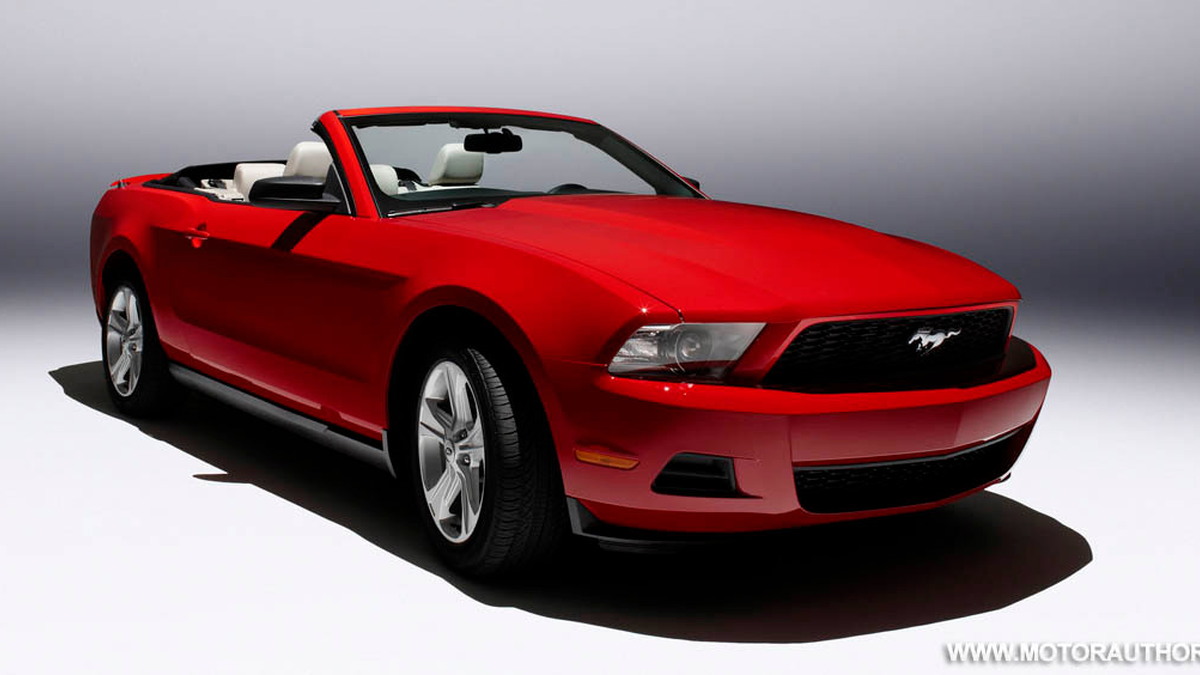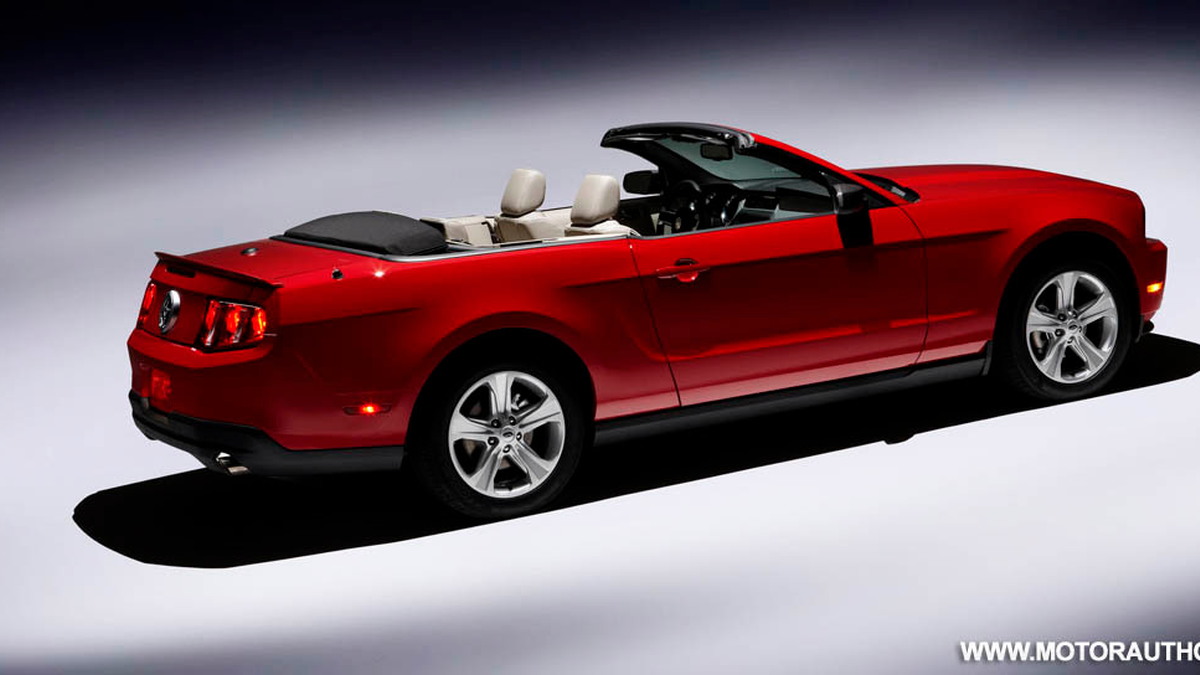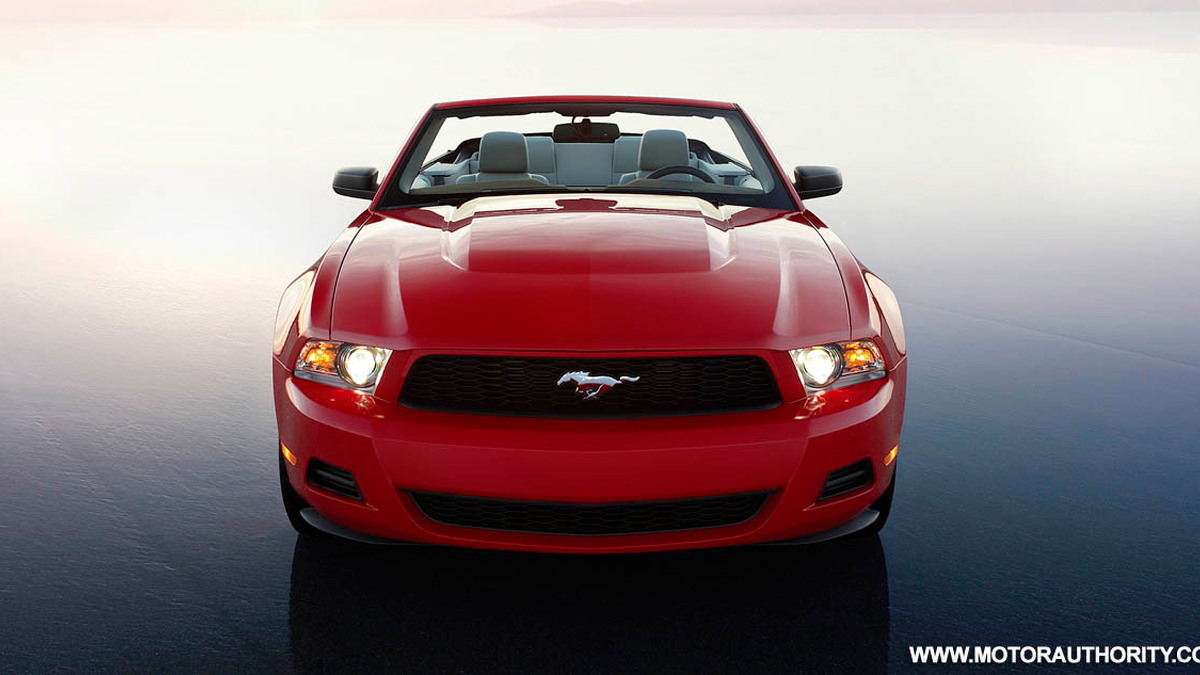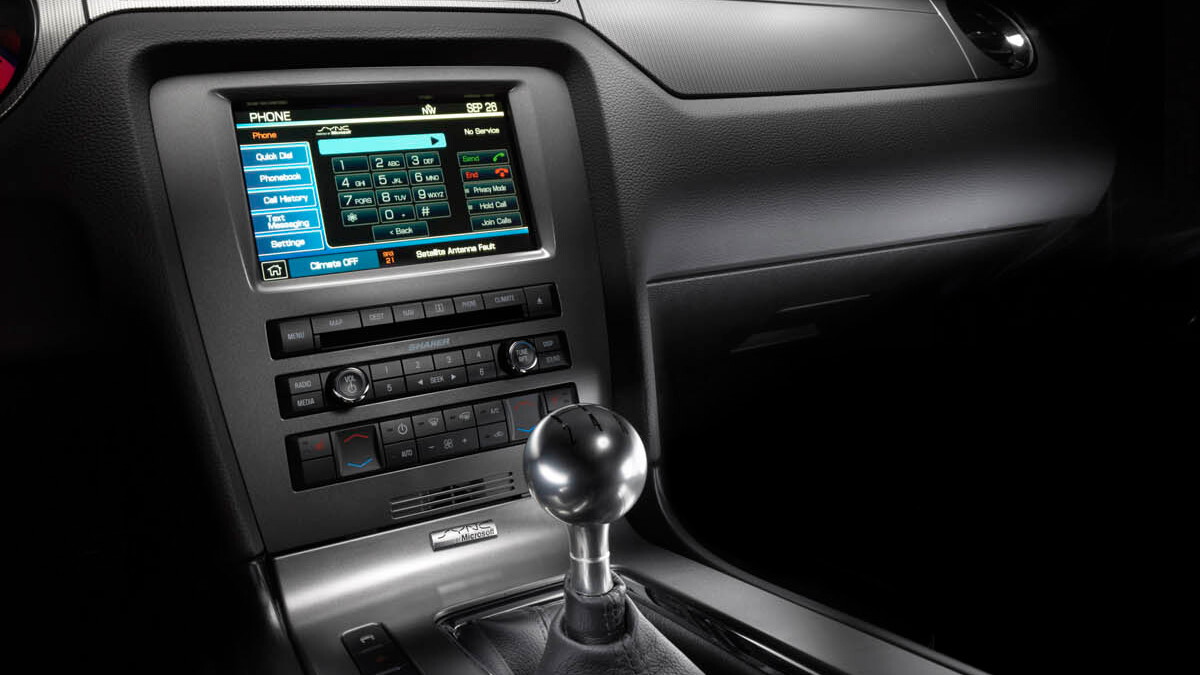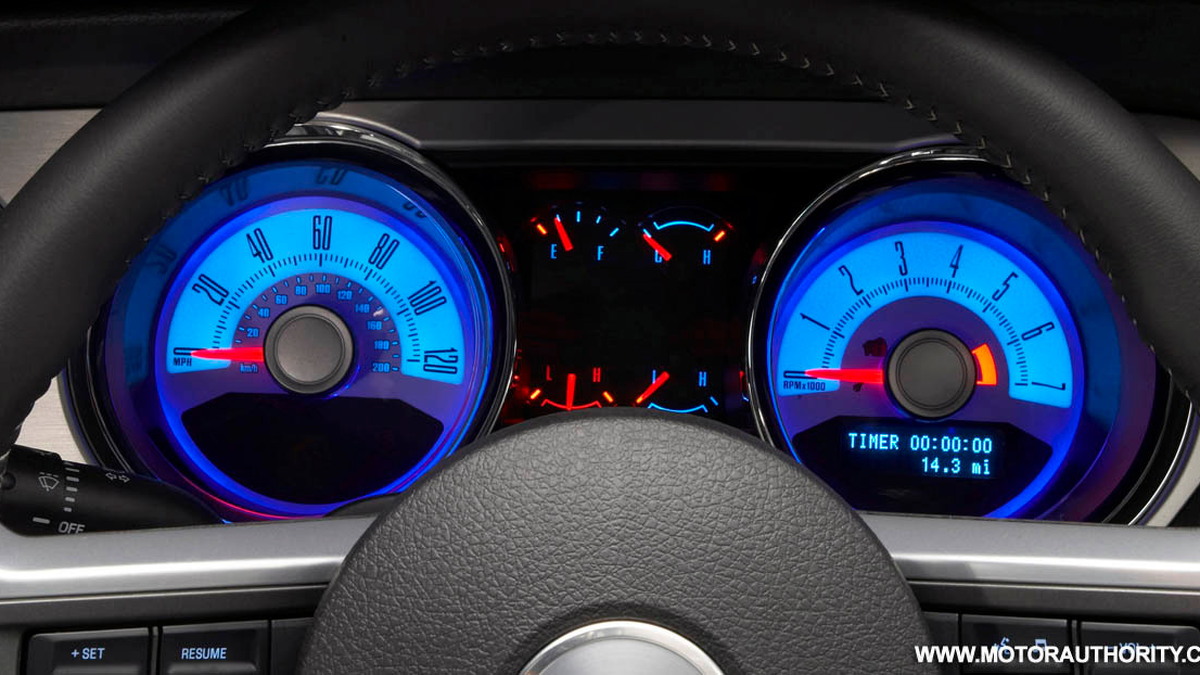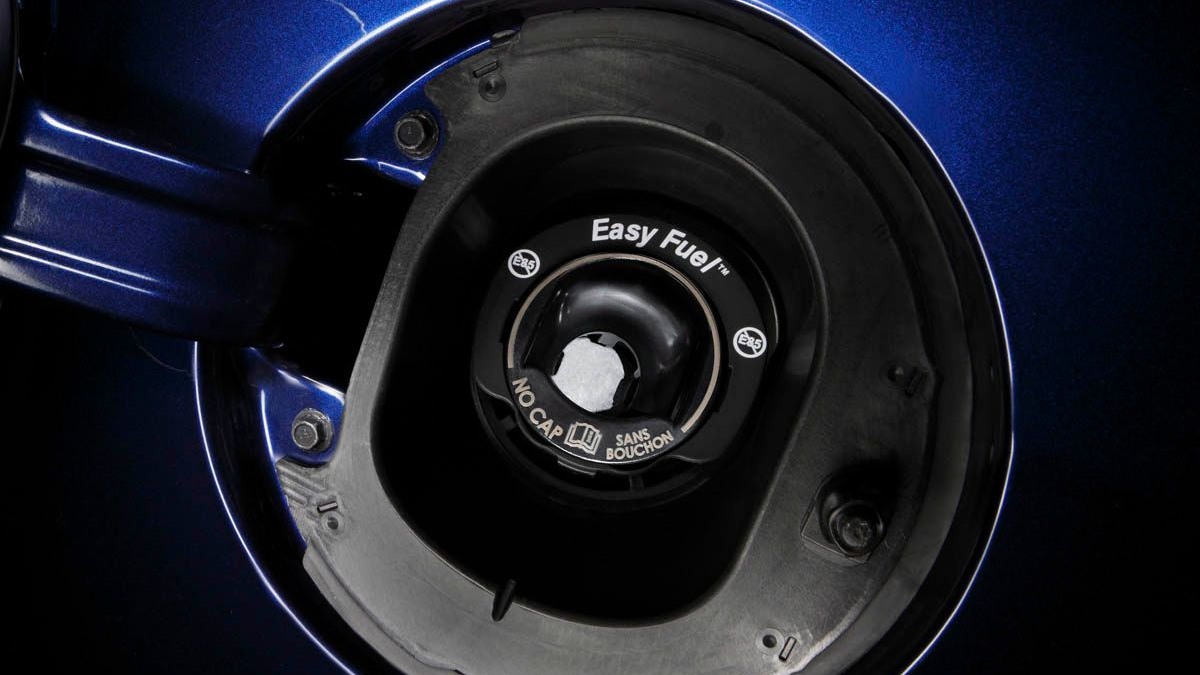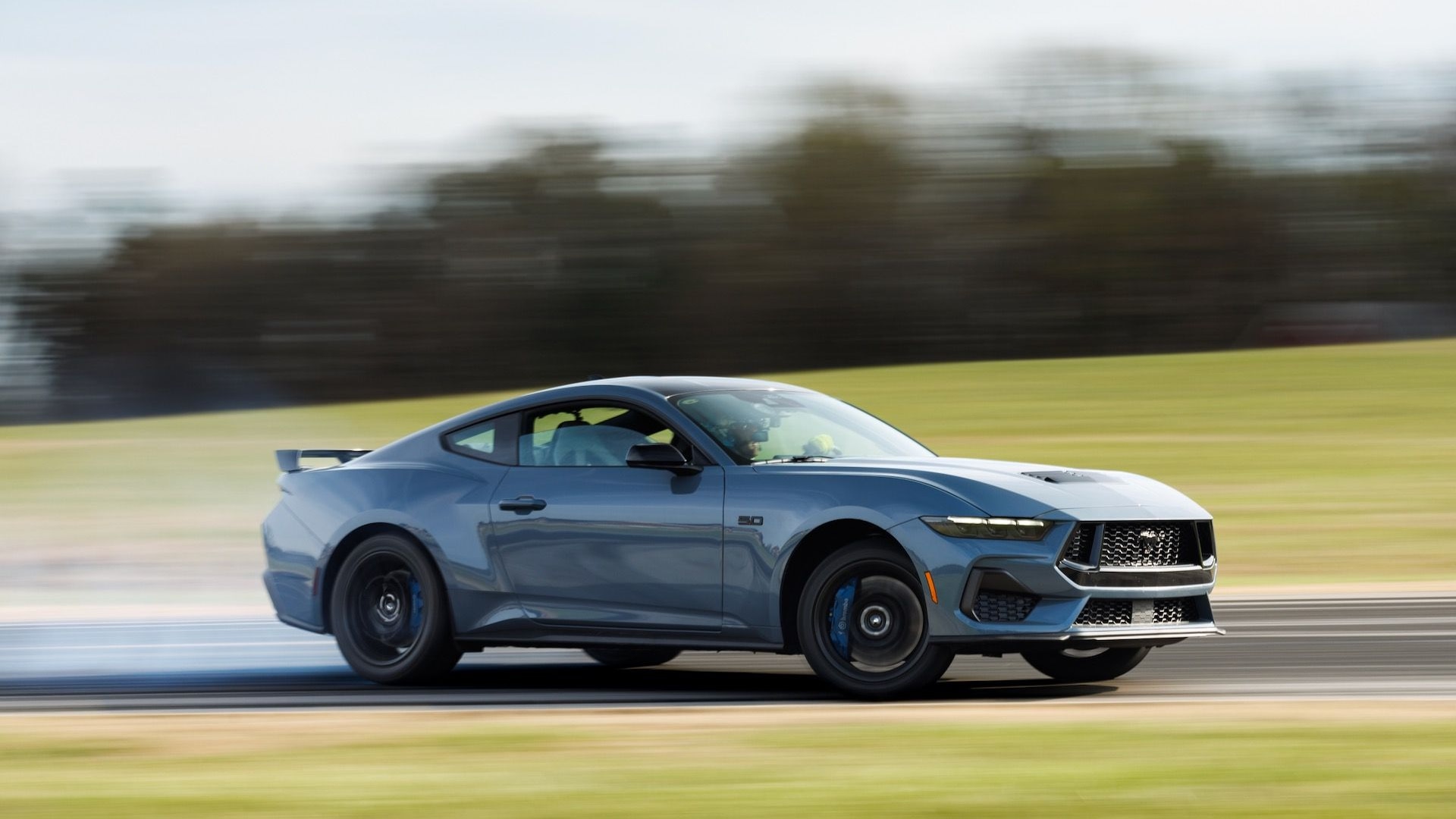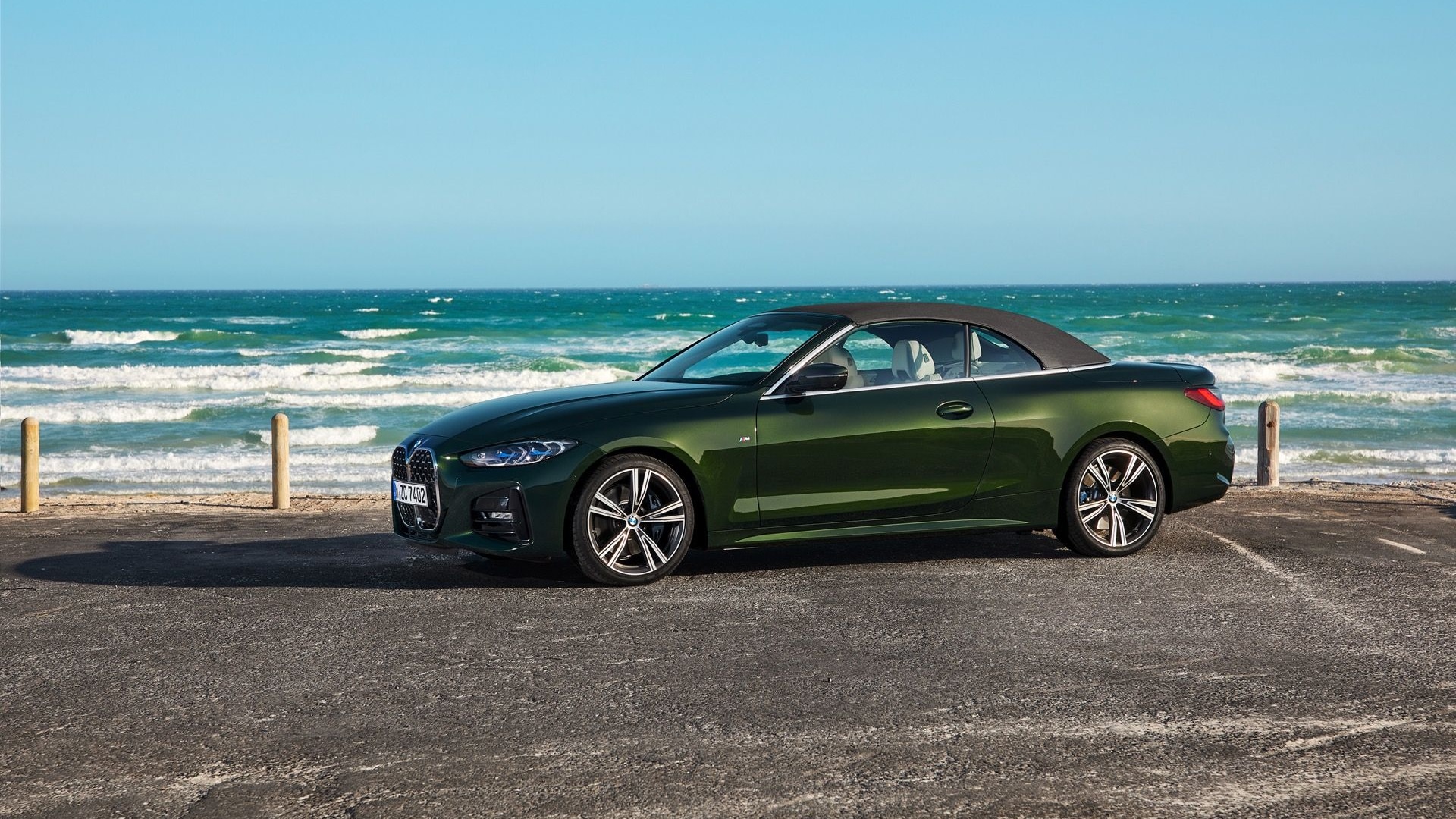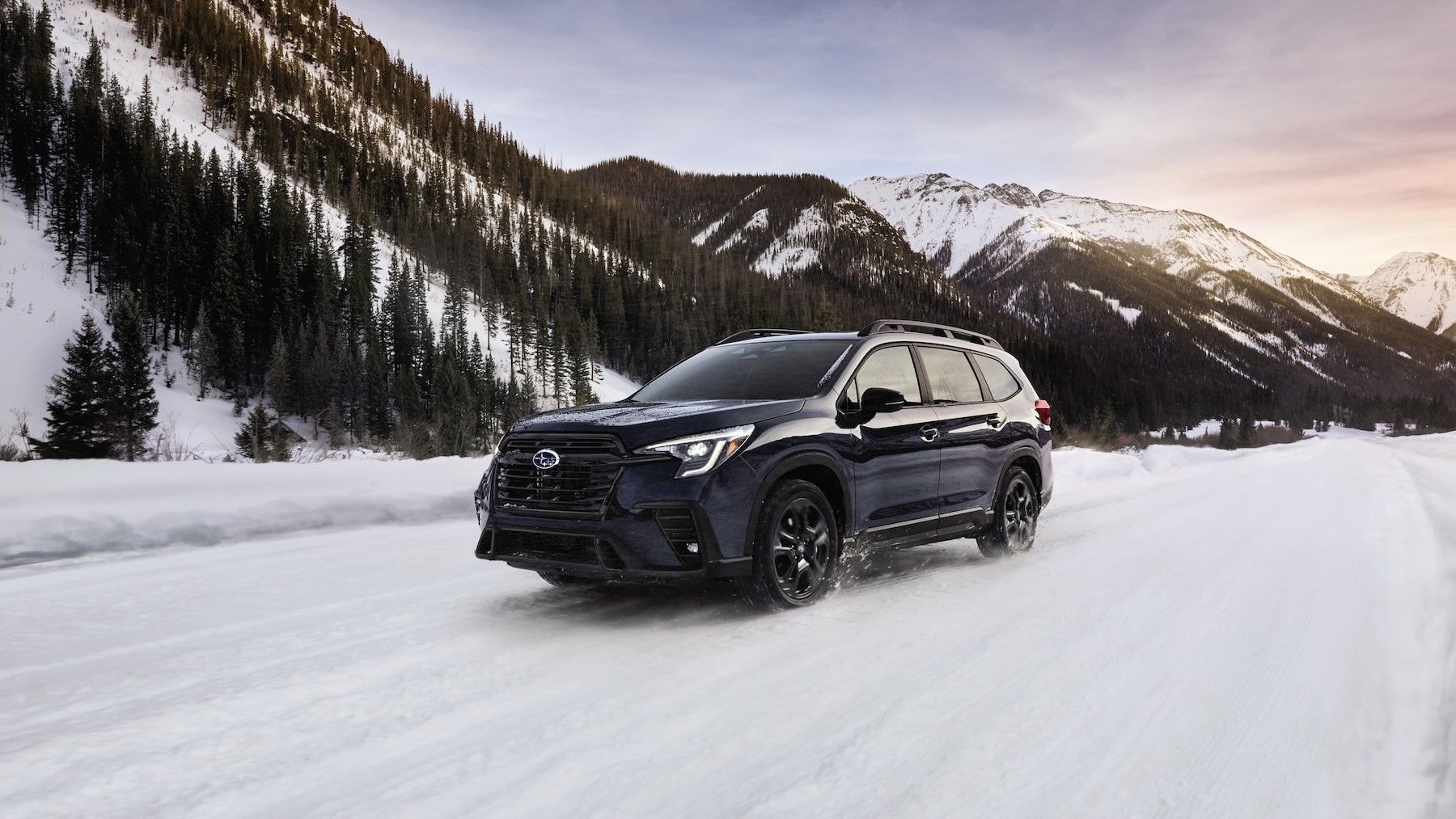It will be well-positioned on price, shaving $1,000 to $2,600 off its primary competitors with the starting price of $20,995 for the entry-level V6 model. Stepping up to GT trim and a V8 engine will cost another $7,000, however, with the entry GT priced at $27,995. In between those two lies a convertible V6 at $25,995 - a $5,000 premium for the cloth top - with a similar premium for the convertible GT, which starts at $32,995. The GT500 coupe starts at $46,325 and the convertible will run $51,225.
A variety of options packages are also available, including a glass roof, which can be installed on any of the coupe models, for $1,995. For more on the benefits and drawbacks of the glass roof, check out our review of a 2009 model year car here.
The biggest change to the iconic muscle car for the new model year is its new interior, which sports a more athletic look and hunkered down stance. The front end on all models is lower and appears wider with strong wheel arches pushing up and out of the muscular fenders. Dynamic character lines emerging from above the grille sweep rearward into a more powerful, sculptured hood.
The aggressive look is enhanced by larger grille openings flanked by slimmer headlamps, which now incorporate integrated turn indicators. Designers have also integrated some modern touches include LED tail lamps and HID head lamps.
The team further enhanced the agile design by stripping away unnecessary clutter. That included minimizing overhangs, eliminating the rear key-hole cylinder, chamfering the rear corner and simplifying the pedestal spoilers to a more compact design. The antenna, previously on the front fender, is now much shorter and relocated to the rear of the 2010 Mustang. The result is a clean, sporty design that looks smart and efficient.
As for the powertrain lineup, the 2010 Mustang will be available with a 4.0L V6 engine, which is rated at 210hp and 240lb-ft of torque, and a 4.6L V8 engine, which is rated at 315hp and 325lb-ft of torque. Each is mated to five-speed manual or five-speed automatic transmissions.
Horsepower gains on the V8 are achieved by a new cold-air induction system pioneered through Ford Racing Technology. The intake is tucked behind the driver-side headlamp, mounted in an air box specific to the Mustang. The redline for the V8 is also increased 250rpm to 6,500.
Both the V6 and V8 engines also have larger exhaust tips, growing to 3 and 3.5in, respectively, up 0.5in from the previous model. The V8 exhaust features polished tips.
Other parts of the mechanical package include a three-link rear suspension with a panhard bar as standard on all models. New for 2010, also, is Ford’s AdvanceTrac traction control and anti-lock brakes. AdvanceTrac uses sensors to detect and measure yaw, or side-to-side skidding conditions, by monitoring the vehicle’s speed, throttle position and steering wheel angle. When it senses wheel slippage, it reduces engine torque and applies the brakes as needed.
Ford engineers also adjusted the springs, stabilizer bars and shocks to better balance the ride, steering and handling for all models.
Tires are increased by an inch across the Mustang line, with 17in tires standard on the V6 and 18in tires standard on the V8. A 19in Pirelli Summer tire is late available as an option for those seeking higher performance.
Inside, the manual model features a genuine polished-aluminum transmission knob and a leather-wrapped shifter, which support a short-throw performance original designed for the Bullitt model.
The instrument panel and console now flow as one shape, and the seats and arm rests have softer materials with high-quality stitching. The new center stack design adds the latest version of Ford SYNC, with new features 911 Assist and Vehicle Health Report. Drivers also can customize their ambient and instrument lighting through the My Color system, which features 125 color options.
The 2010 Mustang is built at the Auto Alliance International Plant in Flat Rock, Michigan.
